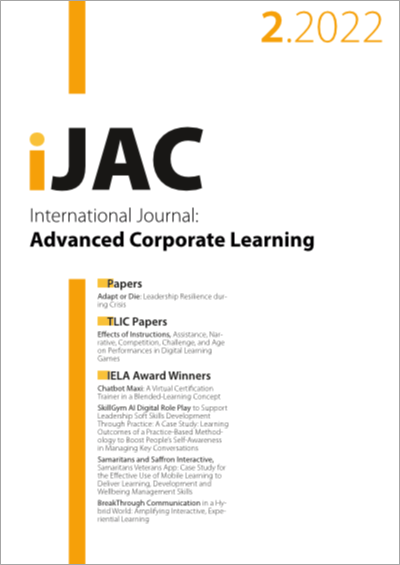BreakThrough Communication in a Hybrid World: Amplifying Interactive, Experiential Learning
DOI:
https://doi.org/10.3991/ijac.v15i2.34091Keywords:
leadership, communication, organizational development, hybrid learning, conflict resolution, teamwork, public speaking, skill developmentAbstract
This case study document describes the research foundation and instructional design of BreakThrough Communication, an evidence-based hybrid learning enterprise that builds organizational capacity by boosting communication skill in individuals and teams. BTC’s tiered talent development program combines asynchronous, self-paced video instruction in foundational knowledge; live virtual workshops customized to engage learners in practicing new skills on organizational challenges they face; and change-sustaining follow-through to embed new skills through assessment, video reinforcers, and real-time practice sessions. A certificate program that prepares internal trainers to assume communication coach roles completes the process. The BTC learning system is grounded in the traditional pedagogy of the communication field, aligns with adult learning theory, and reflects recent neuroscience research on how the human brain most efficiently learns. Three distinct areas of communication skill comprise the program’s subject material: inter-personal conflict; teamwork; persuasive speaking. The communication models within each area have been validated in both experimental and field studies, shown to change behavior and affect outcomes.
Downloads
Published
How to Cite
Issue
Section
License
Copyright (c) 2022 Carol Shuherk, Susan Glaser

This work is licensed under a Creative Commons Attribution 4.0 International License.



